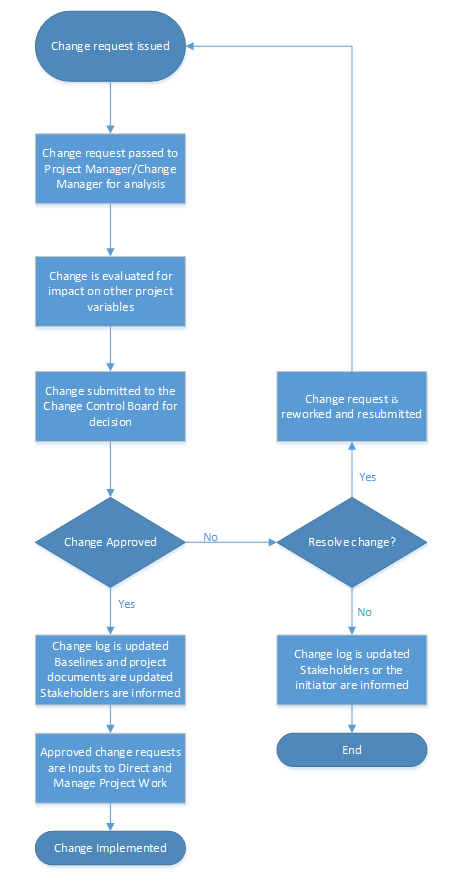Understanding change control is critical for the PMP exam and your career as a project manager.
Below is a simple flowchart of a basic change control process.
Tips and tricks:
- A change request is usually initiated by a project sponsor, client, project manager, project team member or less often by any other stakeholder.
- Change request is the output of:
- All Monitor & Control processes in all Knowledge areas
- Perform Quality Assurance
- Manage Project Team
- Plan Procurement Management
- Conduct Procurement Management
- Manage Stakeholder Engagement
- Approved change requests are inputs to Control Quality and Control Procurements and are implemented through Execute and Manage Project Work.
- While preparing for the PMP, students are often confused about the process, some preparation guides suggest to do an impact analysis and then issue and submit a change request to the Change Control Board (CCB) while other say to issue a change request and then do impact analysis and submit to CCB. Both are correct! Change Control is a process and is usually defined in the Change Management Plan (part of Project Management Plan), depending on the project and/or organization, there will be infinite process variations on how change will be managed and controlled.
- One thing to remember is that if a change request is issued internally (by the project manager or a team member), in most cases the impact analysis would have already been done even before issuing a change request and logging in the change log. You wouldn’t want to issue multiple change requests when a simple impact analysis will show the impact of the change will be unacceptable by the client or CCB. Once the change request is issued, the project manager will follow the same process and submit the existing impact analysis (with any updates or edits) to the CCB.
- For change requests issued by the client, sponsor, or any stakeholder, the first step will usually be a change request is issued and recorded in the change log and followed by impact analysis and so on.
- Approved changes can require revision to schedule and cost baselines, activity sequencing, resource requirements, and risk reassessment. Any changes to scope or product specifications should be managed through configuration control. Review the post on Configuration Management and Change Control vs Configuration Control if you are not clear on this topic.


